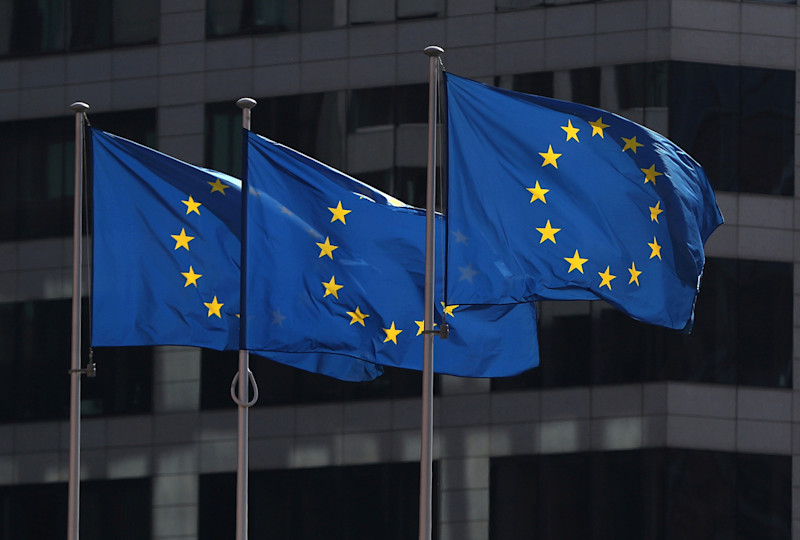This week Hubert Sawicki, our man in Poland, looks at the state of the energy and defense industries. Even before the tragic events unfolding in his backyard, these two sectors were singled out as clearly receiving widespread investments which resulted in opportunities for manufacturing technology. Take a short break from the unsettling news in the region and read on.
Energy prices and supply have never been of such a high concern across the EU as now. As a result, the switch to renewables is gaining true momentum. This push is accompanied by simultaneous, ambitious targets for low emissions, which are included in the “Fit for 55” European Green Deal program, with interim targets for 2030. Until recently, the best performers have been Sweden, Switzerland, the UK, and Lithuania, but the whole of Europe is accelerating, especially in the west.
The program’s zero-emission economy goal seems to be particularly challenging for Central Europe, the Balkans, and even Greece. Many of these countries are dependent on coal and lignite, and their power grids need vast investments. It does not seem too easy for Germany either, which is attempting to dispose of not only coal but nuclear power as well. The country has become too dependent on natural gas, and now, facing real adversity, it needs to be sourced elsewhere, including possibly from the United States.
Europe uses a variety of renewable sources, with the prevalence of wind installations in the north and solar systems in the south. The introduction of additive manufacturing technology into solar panel manufacturing is making solar a particularly attractive target for manufacturers of 3D equipment.
The new German government has just announced a plan for “massive” investments in wind energy, especially in onshore wind. They are proposing to set aside 2% of Germany's land surface for wind energy projects (up from around 0.5% currently) to reach the new capacity of up to 10 GW within just a few years from this source alone. Their target is to create at least a 65% mix of energy renewables by 2030.
Meanwhile, France is still lagging Germany and remains largely nuclear. They’re working on “common industrial projects,” such as electrical networks, batteries, and hydrogen. To accelerate their implementation, and to remove any technical or financial difficulties that may arise, Germany and France have created joint working groups on each of these industrial projects.
Italy already has some 57 GW of renewable generation capacity (solar, hydroelectric, wind, and geothermal) and will double it by 2030. Nevertheless, this would only cover some 30% of the overall mix, and the country is working on bettering it.
Spain is aiming at providing 60 GW of renewable energy by 2030. The program of incentives has made it so popular that now there is an avalanche of applications from investors, which would be 150 GW combined, mostly for solar and wind energy. Similarly, in Greece, tentative licenses have been awarded for renewable energy projects with a total capacity of 95 GW, mostly for photovoltaics. Just 30% implementation would fulfil the Greek target for 2030.
Poland is relatively advanced in consumer solar technologies but finds the industrial conversion from its universally coal-sourced energy not easily achieved. Therefore, it has elected to go for the pioneering technology of small modular reactors (SMR), which are nuclear fission reactors that typically have an electrical power output of less than 300 MW – a technology that is yet unknown in Europe. The country has just signed an agreement of procurement with U.S. company NuScale, which is majority owned by Fluor Corp. The first SMR is to be built at the huge copper mining and processing facility in southwestern Poland, with other local or factory-bound installations to follow.
In recent years member countries of the EU and NATO have gradually been announcing higher expenditures for defense. And now, with the drama of war evolving in Eastern Europe, it is becoming an acute necessity. The 2022 defense budgets are rising. The market is buoyant. Factories are expanding capacities and need technology. A few examples are below.
France will provide $47.9 billion to meet future defense needs, including for cyber defenses and space-based capabilities. Significant and diversified deliveries will be directed to all kinds of forces, sourced in Europe and in the United States. They are working closely with Germany and Spain on new, next-generation projects. Autonomous and remotely operated drones are a new strategy of the French military and will be able to reach depths of 6,000 meters.
The UK has allocated over $62 billion for a range of military applications, many high-end. The UK Royal Navy expects the delivery of its first general-purpose frigates from Scotland –equipped with hypersonic weapons. And it also plans to apply hybrid powertrain technologies to its vessels, primarily through the retrofitting of its fleet by electrification. The unmanned vessels program is underway.
The Netherlands has increased its defense budget to over $14 billion and is fast modernizing its forces.
Norway, with its spending of $6.5 billion, is revising its capabilities.
Most recently, Germany has announced that it will increase its defense budget to 2% of GDP, and this has easily added $110 billion to previous expenditures. Some countries allocate an even higher percentage. The European Defense Agency is busy consulting joint efforts.
New contracts have been announced in aerospace. France will buy 169 helicopters from Airbus Helicopters, Spain 36. The UK is on the market for over 40 units, possibly from Sikorsky, and has signed a large contract with Boeing Defense UK to support its logistic system for global operations. Boeing is expanding its industrial partnership strategy in Germany in support of the Super Hornet and Growler fighter offerings to the Bundeswehr. Potential German industry partners will play a significant role in providing the overall support for Germany’s potential fleet. The largest recipients of funds in the Netherlands have recently been its air forces to include a fleet of F-35s.
The U.S. State Department has approved an estimated $6 billion sale of Abrams tanks with accompanying ancillary packages to Poland. This contract is planned to be further extended. Poland and Romania have been noted as buyers of advanced defense systems from U.S. companies.






